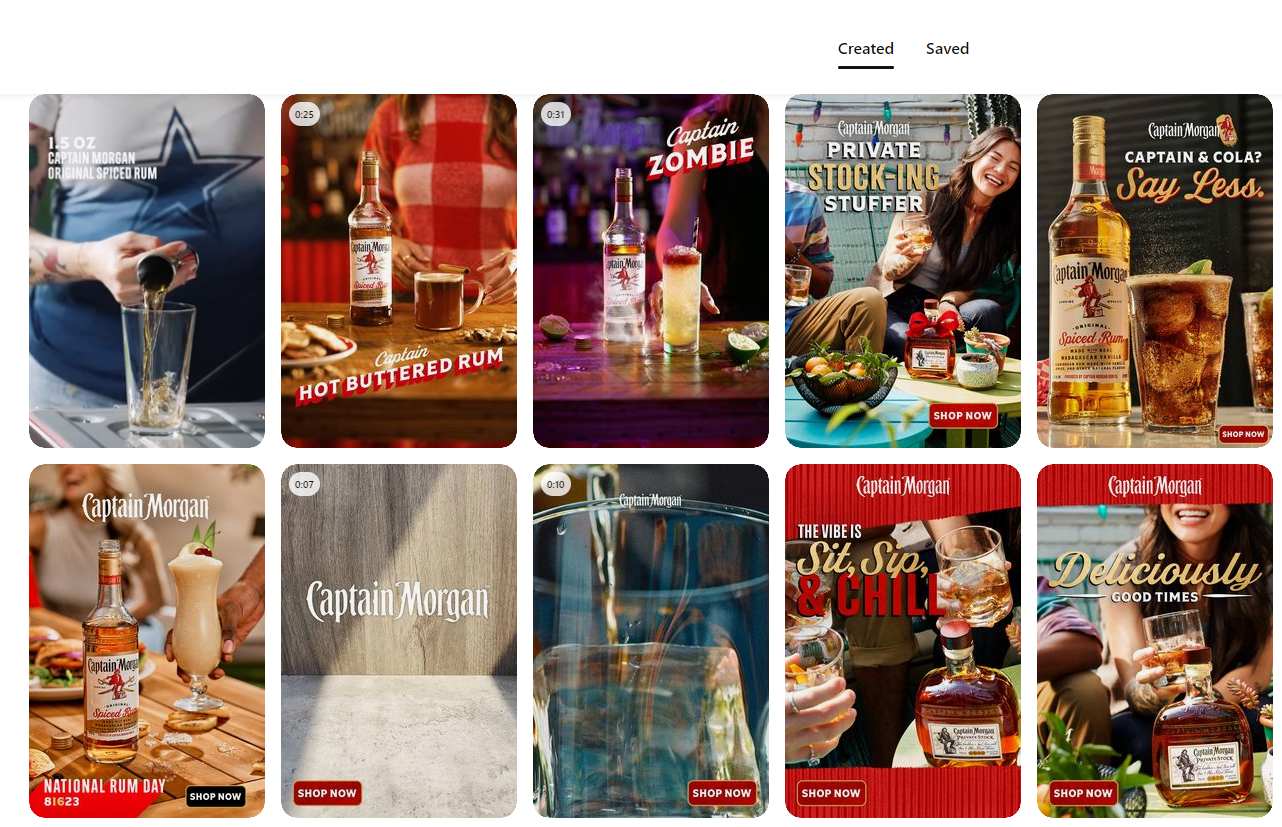The Ultimate Guide to Pinterest Marketing (Part 2)
By Bobby Johnson
November 14, 2023
By Bobby Johnson
November 14, 2023
Many brands stick to a core few social media platforms for marketing, usually Meta or LinkedIn. There’s nothing inherently wrong with picking a lane and doing it well, but brands with strong visuals seriously need to consider branching out to Pinterest.
In last week’s article, we covered what Pinterest marketing is, why it’s an underrated marketing channel, and how to embrace Pinterest’s visual storytelling aesthetic.
Today, we’re sharing the techniques we’ve successfully used in the past to increase engagement and optimize for Pinterest’s unique search needs. We’ll also show a few examples of brands doing it right.

The first job of Pinterest marketing is connecting with your community. That’s the entire point of Pinterest, why it’s such a strong marketing channel: the people on the platform who want your content. They just don’t know it yet.
First, develop compelling pins that fit Pinterest’s templates. The images, visuals, and content you create should inspire users to comment, like, and share, of course. But your content should also match Pinterest’s format and standards, too. Luckily, Pinterest has created a handy list of best practices for that right here.
Engage with your community first-hand. Engagement also goes beyond just creating content. Once the content is out there, the job isn’t over. User comments and messages have to be responded to in a timely and personalized manner. If you don’t have a dedicated social media person, someone should be given the task of monitoring your Pinterest account and responding to your audience.
Explore group boards. Group boards are basically pre-existing communities on Pinterest, built around a common interest. These boards facilitate collaboration and can significantly boost content visibility, potentially attracting new audiences. Their potential to expand your content’s reach is huge.
Check out group boards related to your product, service, or vibe, and see how the users are engaging with it. You don’t want to jump right in with ads or links, but they’re a great place to start your Pinterest marketing research. And, eventually, connect with.
.jpg)
Pinterest is unique in the social media world because it isn’t a place just to post images and videos, or a soapbox to rant about pineapple on pizza. Pinterest is a visual search engine bound together with a community, and that’s part of its power.
And this power is nothing to scoff at: a Pin has 100 times the lifetime of Facebook content and 400 times the lasting power of a Tweet (or a Xeet?).
Brands looking to make a dent on Pinterest have to know how to make their content gel with Pinterest’s style, to actually show up when users search for it.
You should already have a Pinterest Business account if you followed last week’s advice, but if you weren’t there now’s the time to sign up. Once you’re there, fill out every section of your profile with the keywords most relevant to your brand. Talk to your SEO person to get those.
We’re not talking about keyword stuffing: a bunch of random words mixed in like a stream of hashtags. We mean actual content with your most surgically placed and important keywords outlining your brand, your category, and your product.
This will help Pinterest’s algorithm figure out who you are, what you do, and which audience is right for your content.
Rich pins bring your website’s SEO juice into your Pinterest profile. Basically, rich pins sync data from your website, and can come in the form of product pins, article pins, or recipe pins. They can pull pricing, titles, descriptions, and availability from your site.
From an SEO standpoint, this is a gold mine of information to feed right into Pinterest’s algorithm without doubling effort.
Unlock the potential of data analysis to fine-tune your Pinterest marketing strategy. How do we do this? By delving deep into your performance metrics.
Brands can take advantage of Pinterest’s dedicated in-platform metrics for business accounts to assess how their Pins and profiles are performing, gaining valuable insights to enhance their Pinterest strategy.
These tools are easy to use and fairly intuitive, giving you access to a full suite of analytics for your pins, your profile, and your engagement. You can get granular with it, too, tracking your impressions, engagement, pin clicks, saved pins, shared pins, outbound clicks, video viewing behavior, audience vs engaged audience, and monthly views.
As any good marketer knows, a campaign isn’t over when it’s over. Having access to this data lets you examine your success and tweak it in real-time.
Captain Morgan generally goes for the 21-34 demographic, older Gen Z and young-to-average-age Millennials. And they’re killing it, pulling over 10 million monthly viewers and over 43,000 followers.
They’re creating content, images, videos, and entire boards for seasonal events, recipes, brunch, and vibes. This “YOLO chill” vibe hits the older Gen Zers, while the Millennials connect with “home recipe” and “brunch”

And, not to brag (we’re going to brag), our own Inspira Marketing Pinterest account gets close to a million monthly views, no big deal. And that’s due to strong visual content and a team that knows how to use Pinterest.
With the right strategies and content, Pinterest is a valuable addition to any brand’s digital marketing effort. Before you go, let’s summarize what brands need to thrive on Pinterest:
If you’re struggling with social media marketing, or just looking to implement new strategies, reach out to Inspira Marketing today.
This article has been published in the Association of National Advertisers (ANA) Marketing Knowledge Center. Click here to visit their blog.